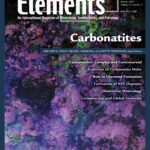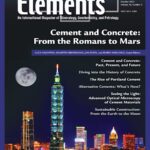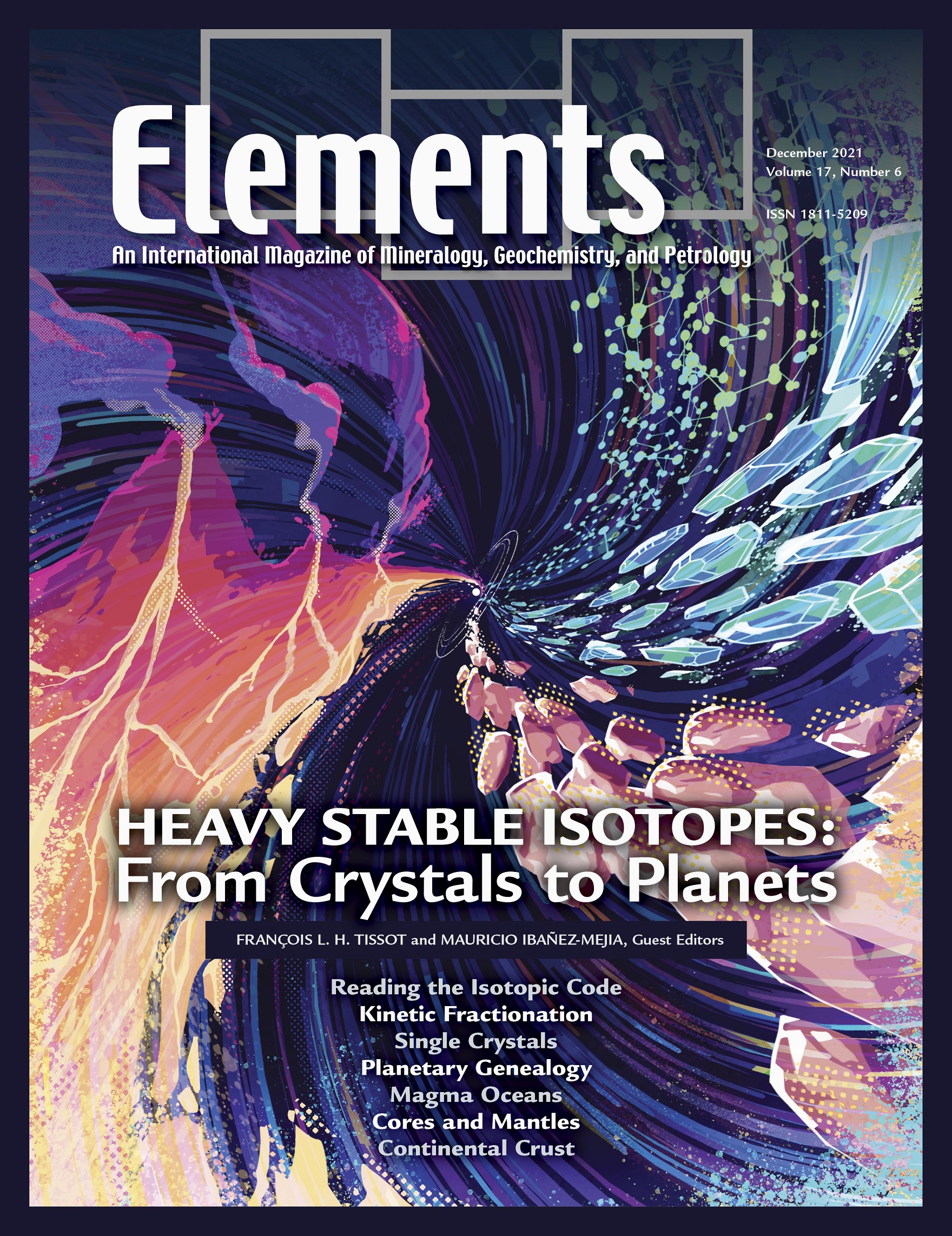
Carbonatites, October 2021, Vol. 17, No. 5
June 28, 2024
Cement And Concrete: From The Romans To Mars, October 2022, Vol. 18, No. 5
June 28, 2024Heavy Stable Isotopes: From Crystals To Planets, December 2021, Vol. 17, No. 6
$20.00
Since their discovery in 1913, stable isotopes have become formidable tracers of physicochemical processes at all scales. Steady advances in mass spectrometry have allowed isotopic inquiries to move from the so-called “traditional” systems (i.
Heavy Stable Isotopes: From Crystals To Planets
December 2021, Vol. 17, No. 6
Since their discovery in 1913, stable isotopes have become formidable tracers of physicochemical processes at all scales. Steady advances in mass spectrometry have allowed isotopic inquiries to move from the so-called “traditional” systems (i.e., H, C, N, O, and S) to heavier “non traditional” systems (e.g., Fe, Mo, Ti, Zr, U) whose diverse geochemical characteristics are providing novel and complementary insights. Moving from micron-size systems (single crystals) to planetary-size bodies, the articles in this issue explore the enormous range of temporal and physical scales over which heavy stable isotopes have provided paradigm-shifting insights into the evolution of our planet and solar system. We also highlight new frontiers where novel stable isotope systematics appear particularly promising for unraveling longstanding questions.
Why You’ll Love Elements Magazine:
- Expert Contributors: Articles written by renowned researchers in the field of geoscience.
- Engaging Content: Join a community of readers who are passionate about Elements.
- Exceptional Quality: Each issue is printed on high-quality paper with stunning visuals and detailed illustrations that bring complex scientific concepts to life.
Order your copy of the December 2021 issue of Elements magazine today and explore heavy stable isotopes: from crystals to planets.
Related products
-
The Nuclear Fuel Cycle – Environmental Aspects, December 2006, Vol. 2, No. 6
$20.00Increasing concerns for the effects of global warming that result from rising greenhouse gas concentrations in the atmosphere have led to a reexamination, even enthusiasm, for nuclear power. Of all the current alternatives to fossil fuels, nuclear fission is the most important source of energy, accounting for 17 percent of the world’s electricity.
-
Water On Mars, June 2006, Vol. 2, No. 3
$20.00During the past several decades, spacecraft data have transformed the planets from astronomical objects into geologic worlds. Mars is the current focus of planetary exploration, and NASA’s objectives for this effort are based on the theme, “follow the water.
-
Nanogeoscience, December 2008, Vol. 4, No. 6
$20.00At first glance, nano and Earth seem about as far apart as one can imagine. Nanogeoscience seems to be a word connecting opposites.




